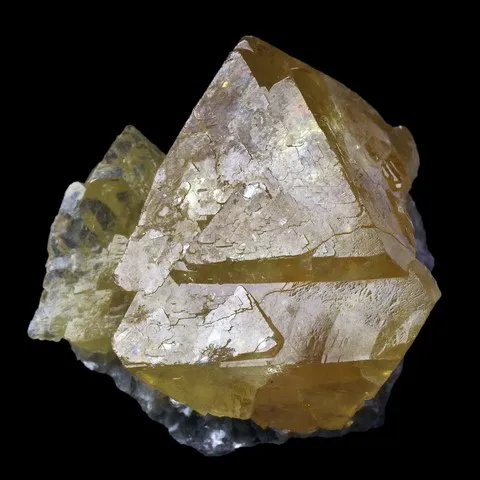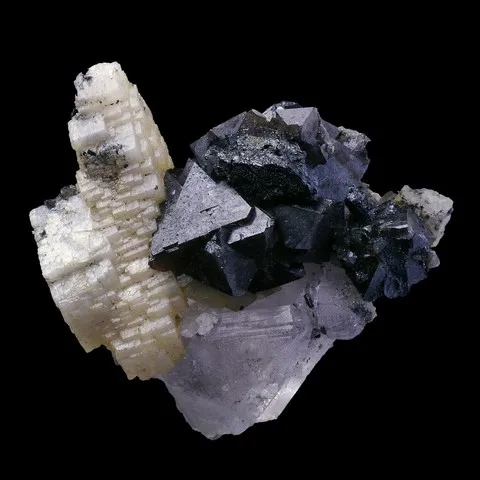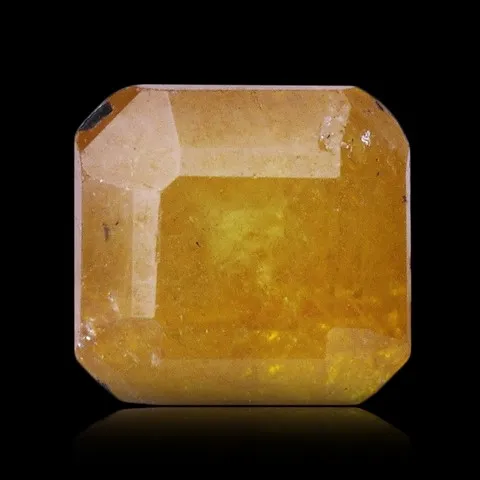SCHEELITE
Class : Sulphates, chromates, vanadates
Subclass : Tungstates
Crystal system : Tetragonal
Chemistry : CaWO4
Rarity : Common
Scheelite is along with wolframite the most common of the tungsten minerals. It forms a limited solite solution with powellite, by partial replacement of tungsten by molybdenum (up to 24% MoO3). Scheelite generally crystallizes under high temperature conditions in association with acidic intrusive rocks (granites or granodiorites) : mineralized skarns (tactites) of pyrometasomatic origin in limestone rocks (with garnet, epidote, diopside, pyrrhotite, molybdenite, chalcopyrite), pneumatolytic deposits (greisens, quartz veins with wolframite and bismuth, perigranitic gold veins...), rarely in pegmatites. Scheelite, like wolframite, also exists in stratiform-looking concentrations, concordant in generally calcareous metamorphic series (South Africa, Brazil). It owes its name to the Swedish chemist Karl Wilhelm Scheele who demonstrated the existence of tungstic oxide in this mineral in 1781. He isolated hydrogen, discovered oxygen, chlorine, glycerin and several mineral acids. Of fatty luster to sometimes adamantine, of high density (6.1), its color is variable, most often colorless or white, yellow, sometimes gray, orange to red, brownish, etc... Scheelite is frequently crystallized in tetragonal octahedra that can measure more than 15 cm. However, it is most often massive and imbricated in many matrix minerals ; its bright white-blue fluorescence under short UV light is very useful in identifying it. Almost unalterable, it is common in alluvium. Its transformation at high temperature into ferberite (pseudomorph called reinite) is frequent in pneumatolytic veins : the octahedral habit is generally well preserved but the crystal acquires a porous appearance. Along with ferberite, scheelite is the most important tungsten ore, when the crystals are transparent it can be cut into gemstones.
Puy-de-Dome, Franc
Scheelite in the World
Scheelite in France
In France, splendid octahedra up to 10 cm intact or transformed in ferberite ("reinite"), were extracted from the Limousin mine of Puy-des-Vignes (Haute-Vienne). The hematite site of Framont (Vosges) gave good 15 mm brown octahedra on fluorite. The Tournebise deposit near Pontgibaud (Puy-de-Dôme) provided rare crystals, the scheelite is most often massive, it is also found in Echassières (Allier) and in many other localities in trace or in micro-crystals.
Twinning and special crystallization
The twins on {110} are common by interpenetration and contact.
Fakes and scams
No fake recorded for this mineral.
Hardness : 4.5 to 5
Density : 6.1
Fracture : Irregular to sub-conchoidal
Trace : White
TP : Opaque to transparent
RI : 1.918 to 1.938
Birefringence : 0.017
Optical character : Uniaxial +
Pleochroism : Weak
Fluorescence : None
Solubility : Nitric and hydrochloric acid
Magnetism : None
Radioactivity : None







